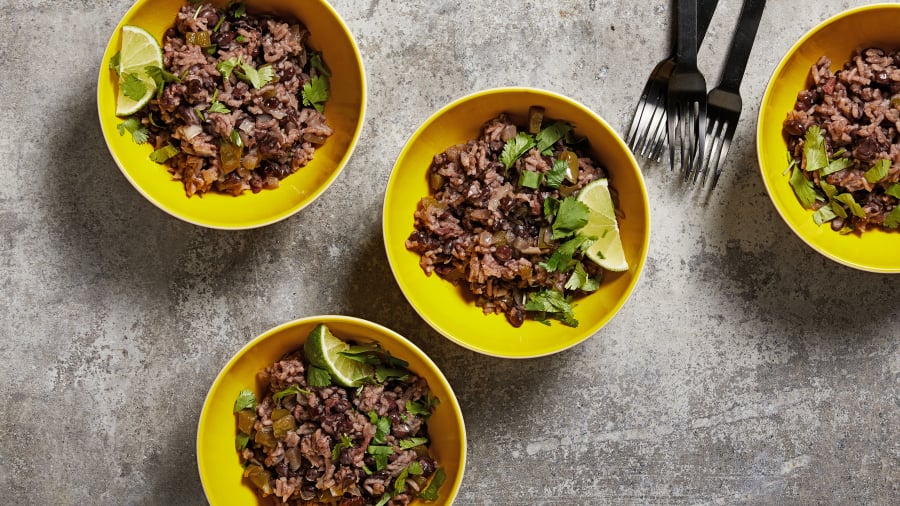Rice and beans are two of the humblest pantry staples. They’re also among the cheapest and most versatile. On their own, they’re pretty, pretty good, depending on how you use them. But these days I’m really digging them together, when the sum is definitely greater than the parts.
I have to agree with chef and cookbook author Maricel Presilla, who, in her James Beard Award-winning “Gran Cocina Latina,” unequivocally calls Cuban beans and rice “one of the most felicitous rice and bean combinations I have ever tasted.”
Its Spanish name is Moros y Cristianos (Moors and Christians), which not only gets at the cultural collisions that led to them ending up on the same plate, but also the juxtaposition of the white rice and black beans.
Once the two star ingredients are combined, the juxtaposition doesn’t last very long. The inky black liquid from cooking dried black beans (it’s easy, and you don’t even have to soak them) colors the rice, and what you get is a seductive, dark hue in the finished dish. The commingling of flavors, ingredients and color is “the history of Cuba in a pot,” Presilla tells me, with its merging of influences from Spain, Africa and Latin America. “It is emblematic.”



